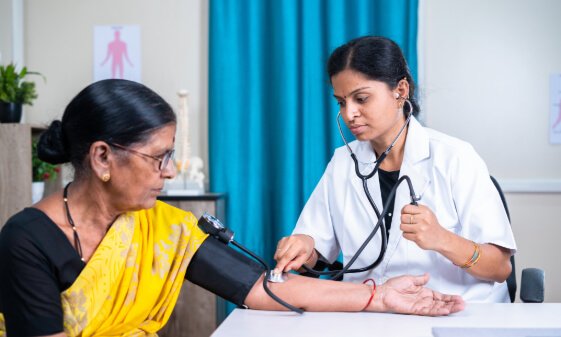India’s Small and Medium Hospitals Need Their Own UPI Moment
Modernisation of Healthcare Requires Training, Accessible Technology, Practical Support
By Amanjeet Singh*
July 7, 2025
As the government marks 10 years of the Digital India programme and celebrates progress in connectivity and service delivery, a critical gap remains in healthcare. Small and medium hospitals (SMHs) across the country still rely on paper records and disjointed processes, lacking even the most basic digital systems. If India wants its digital push to reach the millions who depend on these hospitals, it must create a public health infrastructure that is simple, affordable and practical, just as UPI was for financial services.
These are hospitals that are the 40-bed or 100-bed institutions in Tier 2 or Tier 3 cities, like Guntur, Dhanbad or Saharanpur. Despite serving large portions of populations, they still use paper registers for patient histories and maintain separate, manual systems for billing, diagnostics and admissions.
Policy discussions now often talk about artificial intelligence, precision health and big data, but the reality is that most hospitals in India still do not have digital records of their patients. Most SMHs operate with bare-bones staff, tight budgets and almost no digital infrastructure. Their IT departments, if they exist at all, are often just one person handling everything from internet problems to printer malfunctions.
The problem is that the health software options available in the market are designed mostly for larger corporate hospitals. They’re either too expensive, packed with unnecessary features or too complicated to install and use without dedicated support staff. For many of these hospitals, digitisation is seen as a liability, not an investment. Doctors worry that adopting digital records will slow them down or add to their paperwork, leaving less time for patients. And because there’s no system that links one hospital’s records to another’s, patients often carry their entire medical history in a bundle of physical files, or rely on memory.
Technology hasn’t been built or adapted for the hospitals that need it most.
What India needs is a UPI-style solution for digital health. Just as UPI created a low-cost, publicly available digital platform that allowed everyone from a multinational bank to a local tea seller to accept payments, India needs a similar digital layer that smaller hospitals can connect to, without heavy infrastructure or training.
The Ayushman Bharat Digital Mission (ABDM) is a step in the right direction. It offers a digital health ID for patients, consent mechanisms and a registry of health facilities and professionals. But this still leaves the hard part, which is getting small hospitals to actually use these systems.
Imagine what would change if they did. Hospitals could automatically check if a patient is sticking to a treatment plan. Early signs of sepsis or cardiac deterioration could trigger alerts, allowing faster intervention. Prescription systems could flag dangerous drug interactions. With structured records, doctors could spot patterns in chronic diseases, prevent repeat diagnostics and coordinate care better when patients move between providers.
The building blocks are already in place.
India has expanded broadband coverage, even in Tier 2 and Tier 3 towns. Smartphone use is widespread, and 5G networks are rolling out quickly. But having internet access isn’t enough. Every corner shop in India started using digital payments only when QR codes, apps and rewards made it easy and worth doing. In the same way, hospitals need support, guidance and someone to help them through the change.
The central government must lead with clear policy direction, targeted funding and national platforms that smaller hospitals can actually use. At the same time, states can play a catalytic role by creating local ecosystems. They can approve and promote affordable software, set up tech-support units for hospitals and offer incentives to drive digital adoption. Digitisation can also be built into hospital accreditation, empanelment and reimbursement processes, making it a core part of how healthcare is delivered across the country.
The UPI revolution worked because it was designed for inclusion. That same principle can guide India’s digital health transformation. It must start with small hospitals and expand outwards. If kirana shops could leap into the digital economy, so can our neighbourhood hospitals, with the right kind of push.
(Amanjeet Singh is senior manager at Max Institute of Healthcare Management at Indian School of Business.)
You have just read a News Briefing by Newsreel Asia, written to cut through the noise and present a single story for the day that matters to you. Certain briefings, based on media reports, seek to keep readers informed about events across India, others offer a perspective rooted in humanitarian concerns and some provide our own exclusive reporting. We encourage you to read the News Briefing each day. Our objective is to help you become not just an informed citizen, but an engaged and responsible one.

